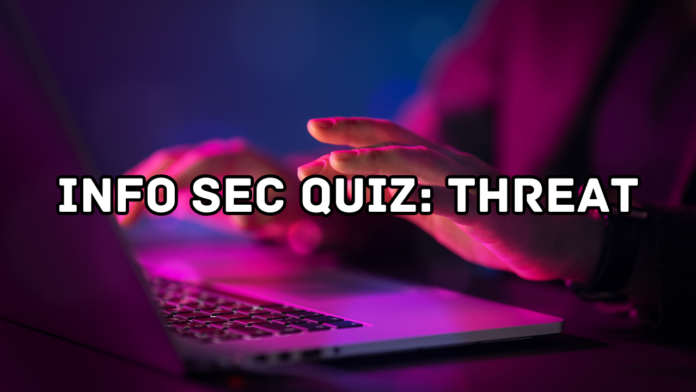Which of the Following Is the Correct Definition of a Threat in Information Security?
In the information security, understanding the fundamentals is paramount. So, let’s dive right into the quiz question at hand: “Which of the following is the correct definition of a threat?” , what exactly constitutes a threat in the context of safeguarding sensitive information and systems.
The Correct Definition of a Threat in Information Security:
To answer this question, we need to grasp the essence of what a threat signifies in the realm of information security.
In simple terms, a threat is any potential danger lurking in the shadows, waiting to pounce on the confidentiality, integrity, or availability of information or systems.
Other simple definition of threat; any potential danger to the confidentiality, integrity, or availability of information or systems.
Now, let’s break down this definition to gain a deeper insight into the intricate web of information security.
The Three Pillars of Information Security:
1. Confidentiality: Imagine this as a locked vault. In information security, it means that only authorized individuals possess the keys to access sensitive information. Think of it as a VIP club where membership has strict criteria.
2. Integrity: This pillar is all about ensuring that information remains untouched and unaltered by unauthorized hands. It’s like making sure the contents of your book stay true to the original script, no matter who tries to tamper with it.
3. Availability: Picture a library that’s open 24/7. Availability means that authorized individuals can access information whenever they need it, without any undue delays.
Now, here’s where it gets interesting. A threat can take on various forms, each capable of undermining one or more of these pillars. Think of them as the adversaries lurking in the shadows of the digital world. They come in different shapes and sizes:
Common Threats to Information Security:
- Malicious Software (Malware): These are the digital troublemakers, including viruses, worms, trojan horses, and other sneaky programs designed to wreak havoc on your computers or networks.
- Human Error: Yes, even the best of us can make mistakes. Human error encompasses slip-ups like clicking on malicious links or neglecting security protocols.
- Natural Disasters: Mother Nature has her own arsenal. Floods, fires, earthquakes—they can strike anytime, wreaking havoc on information systems.
- Physical Threats: Sometimes, it’s not just about lines of code. Physical threats involve unauthorized access to computer systems or data centers and the theft of sensitive information.



